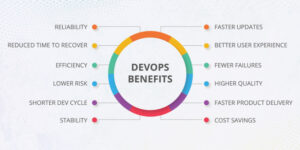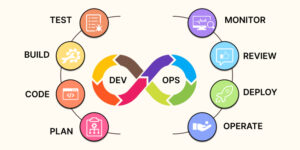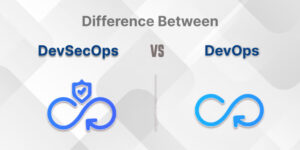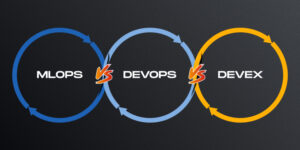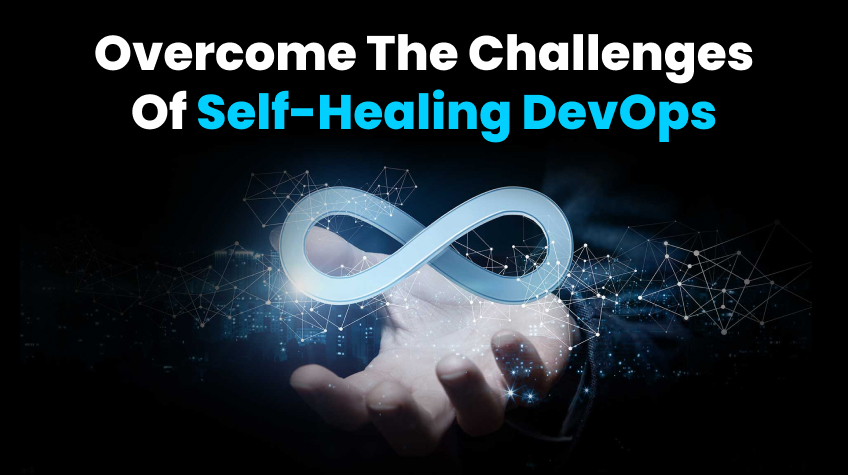
Though DevOps is a new concept for the IT architecture, organizations are more willing to incorporate it in their system for better testing processes. It encourages reliability and confidence in the system. However, it becomes subject to potential complex operations and issues. In such a scenario, the use of self-healing practices in DevOps becomes vital. Do you know why? Take a look at this article to learn everything about self-healing DevOps, including challenges, steps to overcome, and best practices. So, without any further ado, let’s get started…
First off, let’s understand self-healing DevOps in detail. Here we go…
Table of Content
What Is Self-Healing DevOps?
Self-healing DevOps is a system that can automatically identify and fix issues without human intervention. This system is often used to fix problems faster than developers or support teams as it reacts more promptly than humans. This system works on defined rules or machine learning. It can help reduce downtime, improve operational efficiency, and increase reliability. It autonomously predicts and detects errors based on machine learning algorithms and automation technology. Its self-correcting, fault-tolerant, and system-survival properties make it efficient in responding to unexpected occurrences.
The idea of self-healing DevOps originated in the Reactive Manifesto published in 2014. It advocated that DevOps should function with self-healing systems. This is because the self-healing system recovers the disruptive DevOps to the normal stage without developers or a support team. Typically, a system that comprises self-healing properties is considered responsive and elastic. It can respond to adverse conditions or complexities without hassles.
How Does Self-Healing DevOps Help Organization?
Self-healing DevOps help organizations to have seamless business operations even in the event of failures. It provides auto-remediation of issues, ensuring an optimized system and real-time processes. Its analytics and automation make it more scalable than ordinary DevOps which human engineers manually administer.
These days, organizations are looking to implement AI-driven self-healing practices in the DevOps system. A fully functional self-healing infrastructure is always cost-effective and it significantly reduces the threat of potential cyber-attacks. It ensures organizations meet industry-regulated compliance obligations without hurdles. Swift resolution of issues encourages the customers’ confidence in the system. Self-correcting techniques make the system reliable and secure. Overall, self-healing DevOps powers an organization, ensuring an enhanced brand reputation, accelerated productivity, and reliable infrastructure.
Self-healing DevOps certainly brings a variety of benefits, yet it also presents some challenges. These challenges can certainly be managed effectively. Wondering how? Read ahead to know…
Challenges in Self-Healing DevOps
Implementation of self-healing DevOps comes with a set of challenges, some of them are as follows:
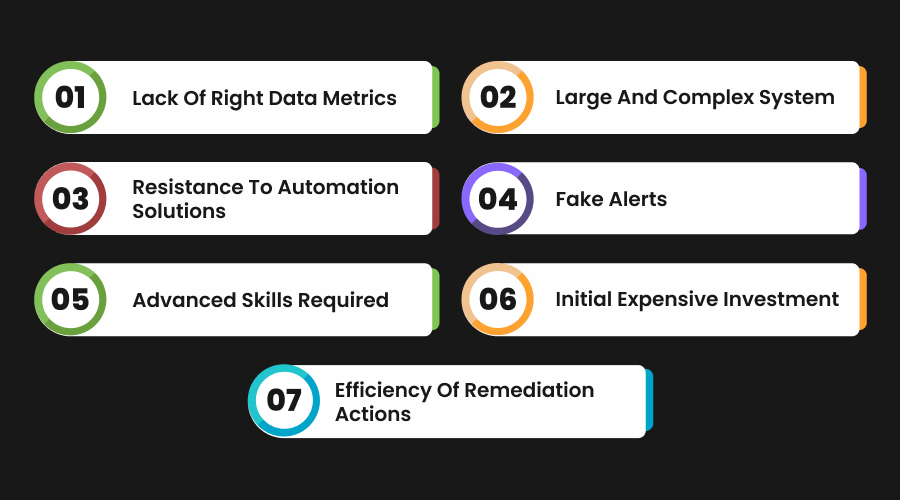
CHALLENGE NO. 1: Lack of Right Data Metrics
Without a doubt, self-healing DevOps practices correct the issues automatically. However, they lack the key analytic metrics to diagnose the errors. This increases the possibility of a wrong analysis of problems, escalating the risk of inappropriate self-healing actions.
CHALLENGE NO. 2: Large and Complex System
A large and distributed IT infrastructure features interconnected components across multiple technologies i.e. cloud systems, edge computing, etc. A failure in one area spikes the risk of cascading failures. In such a situation, identifying the underlying cause for self-healing DevOps is challenging. This makes its implementation unrealistic in the real world.
CHALLENGE NO. 3: Resistance to Automation Solutions
Though self-healing DevOps ensures less dependence on human engineers, organizations do not feel confident leveraging automation solutions. Software developers anticipate unintended consequences post-auto-remediation. A cultural resistance to self-correcting techniques makes their implementation vulnerable in organizations.
CHALLENGE NO. 4: Fake Alerts
Integrated with overly sensitive alerts, self-healing DevOps often identifies fake issues, reducing the system’s reliability. Organisations traditionally considered manual intervention to be more reliable for identifying and correcting errors than implementing self-healing DevOps.
CHALLENGE NO. 5: Advanced Skills Required
Another challenging factor that makes the application of self-healing DevOps less common is the advanced skills gap. Its implementation generally requires specialized knowledge from engineers. A lack of expertise in data analysis, machine learning, and advanced automation technology makes its application more difficult than ever.
CHALLENGE NO. 6: Initial Expensive Investment
Initially, self-healing DevOps’ cost of alerts, constant monitoring, and analytic and automation solutions remain high. However, its benefits offset the expenses in the long run.
CHALLENGE NO. 7: Efficiency of Remediation Actions
Choosing the right self-correcting technique to address the system’s issues is a complex procedure. Therefore, it requires careful consideration of potential impacts prior to implementing the system.
So, these are some of the challenges that organizations often experience upon implementing self-healing DevOps practices. However, the coolest thing is that these challenges can be handled. Read the upcoming section to understand how to overcome these challenges. Here we go…
Solutions to Overcome Self-Healing DevOps Hurdles
Overcoming self-healing DevOps challenges require strategic approach. Here are the solutions that you can use to overcome these challenges. Take a look…
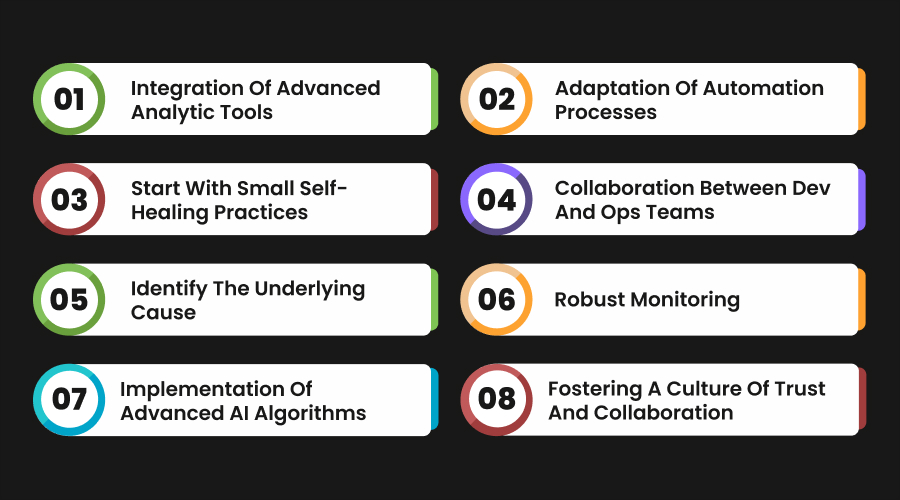
SOLUTION NO. 1: Integration of Advanced Analytic Tools
The best way to overcome the challenges that come with self-healing DevOps is to integrate advanced analytic tools. Integrating advanced analytic tools can enhance the use of this versatile tool. Advanced tools encourage machine-learning algorithms to diagnose issues accurately, ensuring optimized processes.
SOLUTION NO. 2: Adaptation of Automation Processes
Another way organizations can handle the challenges of self-healing DevOps is to opt for automations processes. By adapting automation processes organizations can ensure efficient operations. Moreover, it gives employees enough time to focus on core tasks. This shift to automation technology boosts stakeholders’ trust in self-healing practices.
SOLUTION NO. 3: Start with Small Self-Healing Practices
If you are just beginning with self-healing DevOps and are not sure how to proceed, then starting small is advised. Software developers should implement small auto-remediation practices to ensure the positive impact of self-healing DevOps. This helps them analyze its consequences. Once they find it trustworthy, they can scale up self-healing practices according to the requirements.
SOLUTION NO. 4: Collaboration Between Dev and Ops Teams
Ensure open communication and collaboration between the Dev and Ops teams. Collaboration between the Dev and Ops teams enables constant feedback, guidance, and support for faster and more reliable software delivery.
SOLUTION NO. 5: Identify the Underlying Cause
Lastly, identifying the underlying cause and implementing appropriate solution can help mitigate challenges associated with self-healing DevOps. Software developers can consider utilizing techniques like correlation analysis and distributed tracing to recognize the root cause of the issues and ensure an optimal system.
SOLUTION NO. 6: Robust Monitoring
Having robust monitoring systems can help developers overcome hurdles associated with self-healing DevOps. Having a strong monitoring system in place ensure the security, stability, and efficiency of various systems and processes within the organization.
SOLUTION NO. 7: Implementation of Advanced AI Algorithms
Implementing advanced AI algorithms is vital for organizations experiencing challenges with self-healing DevOps. AI enhances DevOps by automating complex tasks, predicting potential issues, and optimizing processes. Furthermore, AI algorithms can examine extensive data produced by DevOps processes, offering insights that were once unattainable.
SOLUTION NO. 8: Fostering a Culture of Trust and Collaboration
A collaborative DevOps culture can come in handy when experiencing challenges with self-healing DevOps. Fostering a culture of trust and collaboration encourages regular feedback, knowledge sharing, and continuous learning, helping developers fix errors and bugs in a timely manner.
Let’s now take a look at the best practices for implementing self-healing DevOps. Read on!
Also you can read this DevOps Can Assist with Cloud Relocation and Executives
Self-Healing DevOps Best Practices
Here are the best practices for self-healing DevOps that you should be aware of prior to implementing self-healing DevOps. Take a look…
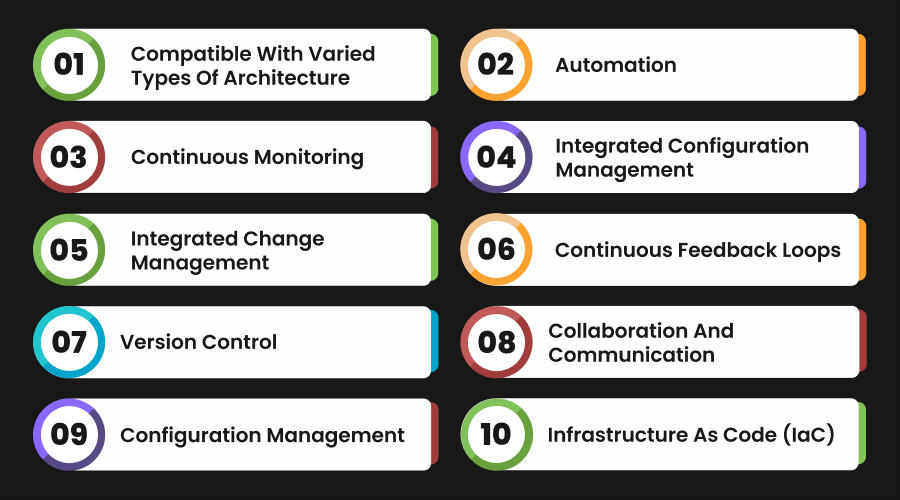
1. Compatible with Varied Types of Architecture
The DevOps methodology is applicable to a wide range of architectures, independent of their size or level of efficiency.
2. Automation
The automation of AI-driven self-healing DevOps efficiently predicts and detects issues in the product development cycle. Also, automatic remediation steps fix the errors faster than manual intervention.
3. Continuous Monitoring
A proactive alert system helps organizations identify potential threats, ensuring zero risk of errors during software delivery.
4. Integrated Configuration Management
The integrated system ensures the optimization of the existing system. It also enables the maintenance of system-wide configurations across networks, servers, storage, etc., allowing software developers to focus on crucial tasks.
5. Integrated Change Management
With technology ever-evolving, organizations must be agile in adopting changes. The integration of self-healing DevOps principles expedites faster releases, ensuring the incorporation of new changes and technologies.
6. Continuous Feedback Loops
By removing the manual interruption in performance and monitoring, self-healing DevOps establishes better continuous feedback loops in the system. They mitigate potential risks and make certain data is accessible to concerned team members they need to do their jobs in a timely manner.
7. Version Control
Developers can consider using tools like Git or Perforce Helix Core to track code versions and revert to stable versions when changes cause instability.
8. Collaboration and Communication
Self-healing DevOps supports collaboration between development, operations, QA, and security teams to ensure efficient operations.
9. Configuration Management
Self-healing DevOps uses integrated configuration management to optimize the use of existing systems.
10. Infrastructure as Code (IaC)
It uses code and declarative definitions to manage and define infrastructure configuration.
Self-healing DevOps practices are powered by machine algorithms to detect underlying issues. With their auto-remediation feature, they resolve the issues without any human expert’s assistance. However, their implementation is not easy in organizations. With a proactive approach, software developers can leverage these practices to ensure a reliable and faster product launch.
Summing it up…
This wraps up the discussion on self-healing DevOps challenges and how to overcome them. While self-healing DevOps brings transformative opportunities for automation and resilience, it also comes with challenges like system complexity, data accuracy, and cultural adaptation. Thankfully, by implementing the methods outlined above, these challenges can be effectively addressed.
For expert support in navigating these challenges, visit WeeTech Solution – the best DevOps service provider. Contact us today to learn how we can help!
All of the methods outlined above are tried and tested. By using these methods, organizations can proactively resolve issues. Addressing these challenges in a timely manner allow organizations to unlock the full potential of self-healing systems, ensuring seamless operations and enhanced efficiency. All in all, a well-executed self-healing DevOps strategy can help teams focus on innovation and drive business growth.


